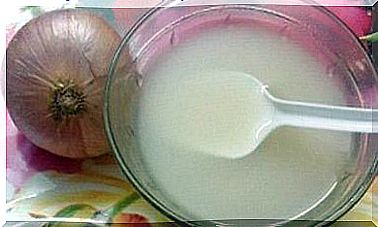Pulmonary Heart: Risks, Causes And Symptoms

Pulmonary heart disease is a condition characterized by damage to the right side of the heart as a result of severe lung disease. Causes fluid retention and progressive respiratory distress.
Therapeutic options are limited because it is necessary to solve the basic problem. Read on to find out more about this serious condition!
Symptoms
The symptoms depend on the severity of the disease and are the product of the underlying lung condition and associated heart damage. Therefore, they often occur in those with respiratory difficulties (dyspnea) with progressive onset.
Initially, symptoms may occur during moderate-intensity physical activity, such as long-distance walking or climbing stairs. They can occur even during rest in more severe cases.
Once the heart damage occurs, swelling occurs due to the accumulation of fluid (edema) in different parts of the body, such as the lower limbs. Congestion of the jugular veins located in the neck and enlargement of the liver (congestive hepatomegaly) are common symptoms.
The main causes of the pulmonary heart
As the name suggests, this condition involves progressive lung damage resulting from constant inflammatory reactions. According to the World Health Organization (WHO), this is one of the leading causes of death worldwide. The most important risk factors for its development are long-term smoking and exposure to biomass combustion. The latter occurs when cooking with wood.
The main symptoms of COPD are dyspnoea, productive cough and a tendency to develop respiratory infections. Lung damage results in reduced oxygenation of the blood and may require permanent oxygen therapy.
There are several associated comorbidities, the pulmonary heart being one of them. This aggravates the prognosis, because the treatment of both diseases is difficult.
This is a disease with a strong genetic component that, despite affecting many systems, is more severe in the lung area. The main characteristic problems are secretions, especially mucus naturally produced in the airways.
As you can imagine, this increases the frequency of fatal respiratory infections, such as those caused by Pseudomonas aeruginosa. The damage is so obvious that cystic fibrosis is most often diagnosed in the first months or years of life.
As the disease progresses, pulmonary hypertension and heart failure occur. Also, the mortality rate is high in children diagnosed with pulmonary heart disease, according to studies.
This term describes a group of disorders that cause fibrosis and progressive organ damage. Fibrosis is an excessive repair process that generates tissues without a specific function.
Dermatological reactions are the most common, despite the fact that the lungs are some of the most affected internal organs. It results in diffuse interstitial lung disease and also pulmonary hypertension, just as in the previous case.
Epidemiologically, scleroderma affects women between the ages of 30 and 50. There is no definitive treatment. The treatment aims to relieve symptoms and reduce associated inflammatory phenomena.
Doctors use a combination of clinical and paraclinical elements to make a diagnosis. Cardiac lesions affect a cavity, the right ventricle, resulting in hypertrophy and dilation. The first process involves an increase in the thickness of the cavity walls, and the second refers to an increase in the size of the ventricle.
These processes can be analyzed by a simple chest x-ray and an electrocardiogram. Doctors also do ultrasounds or use magnetic resonance imaging.
The onset of pulmonary hypertension is confirmed by right cardiac catheterization. This technique involves inserting a thin tube through a vein into the groin, neck or arm. The technician moves the tube to the right side of the heart to measure its pressure.
Treatment available

Therapy is complicated in most patients, which explains the associated high mortality. Because the pulmonary heart is secondary to another condition, the most effective approach is to eliminate or reduce the factors that cause heart damage. This may be impossible in severe cases and may require a lung transplant.
Depending on the patient’s clinical context, there are medications to relieve symptoms related to fluid retention. Diuretics are helpful, although there are some contraindications that your doctor should evaluate.
There are many medications to treat pulmonary hypertension (such as pulmonary vasodilators). They are not effective for diseases that cause pulmonary heart disease as a complication.
Prevention of the pulmonary heart
Some









